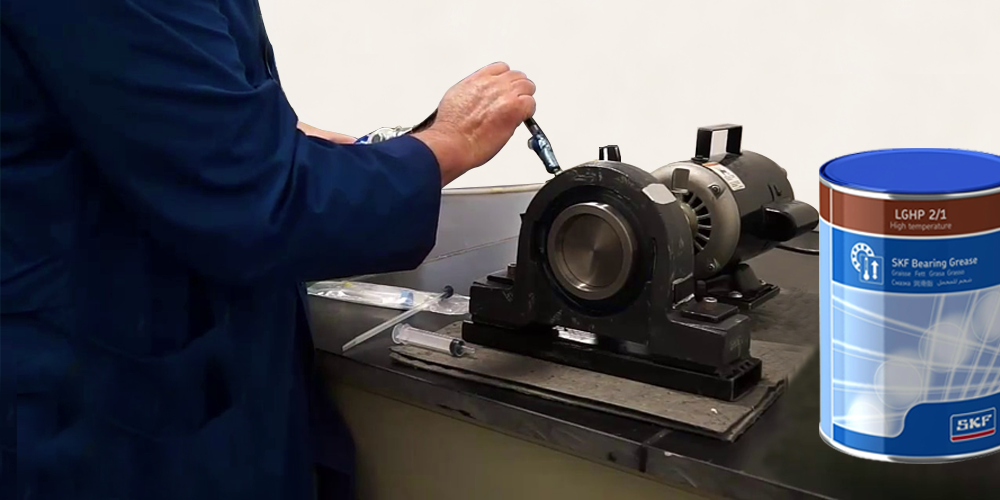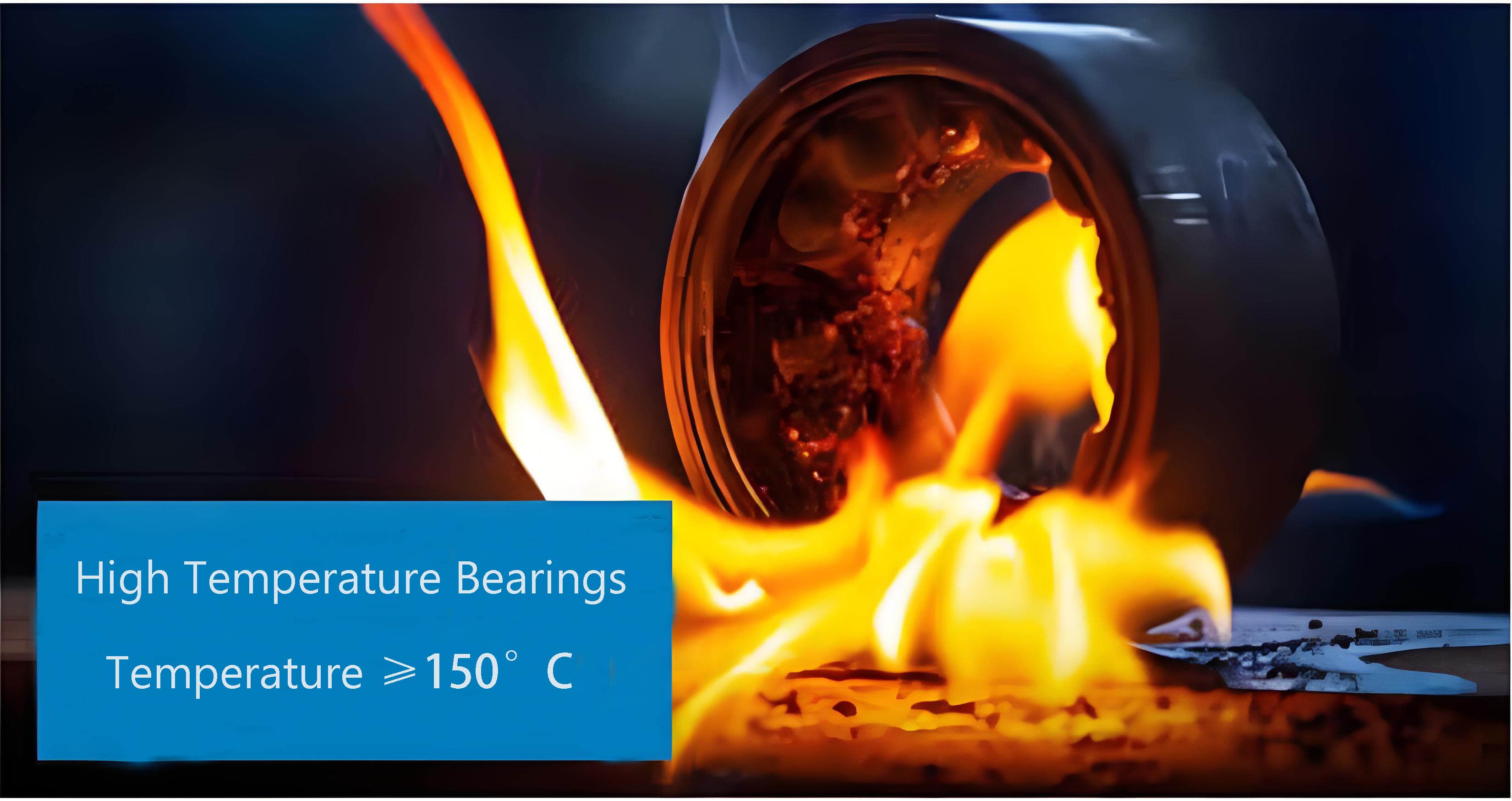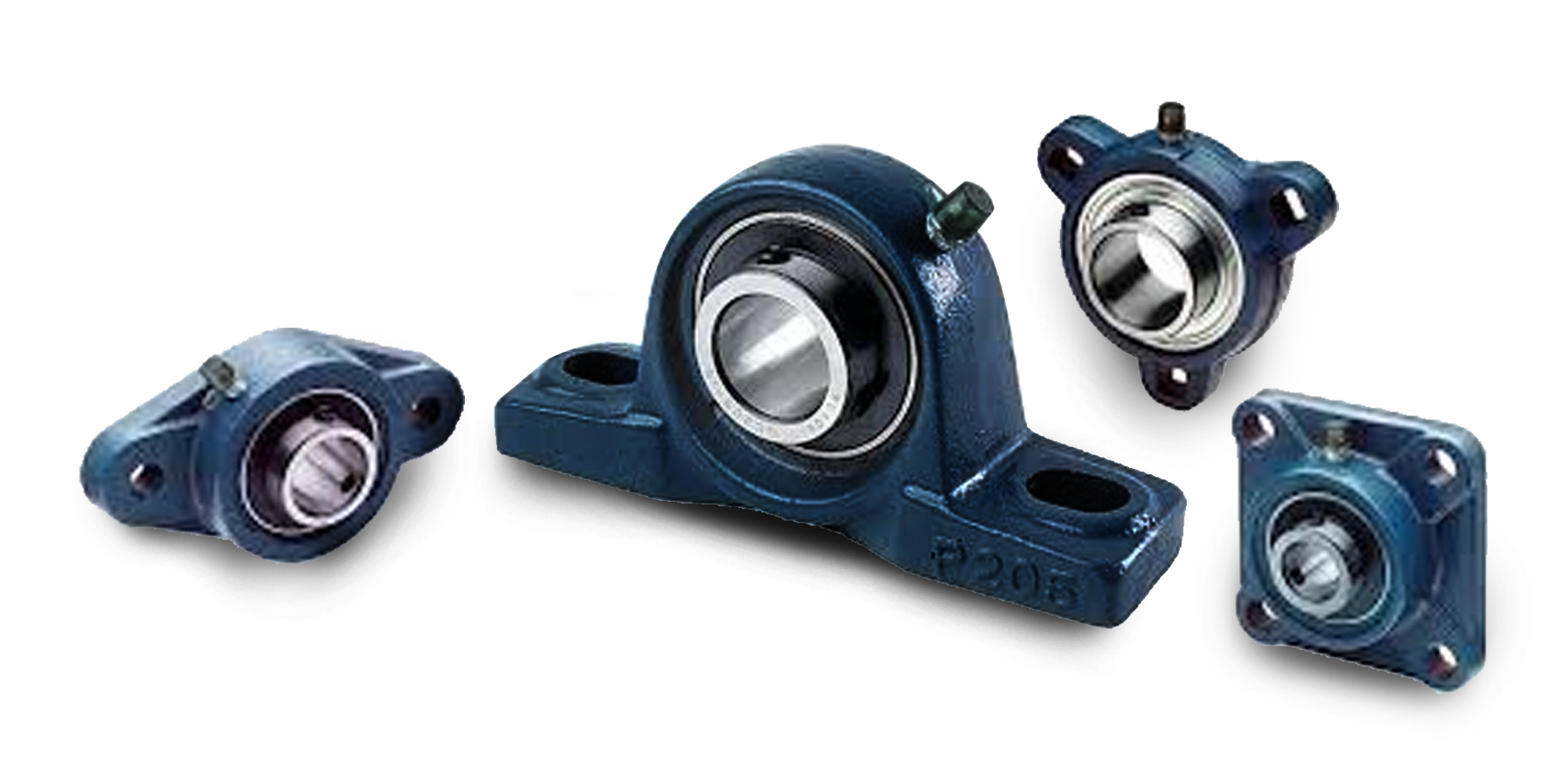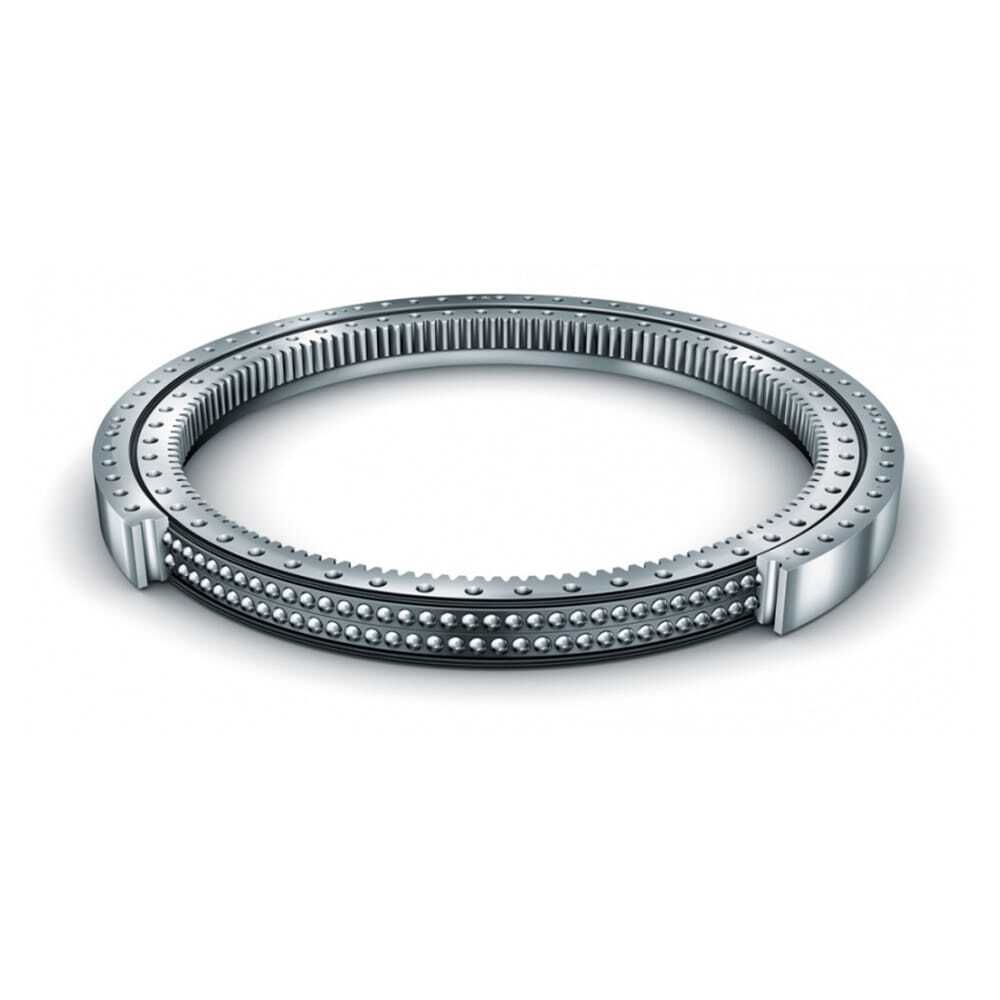High Temperature Bearings: A Complete Guide
High temperature bearings are made to withstand extreme heat and keep working reliably. They help machines run smoothly even in hot conditions. This...

Proper lubrication is paramount for the optimal performance and extended lifespan of pillow block bearings.
Without it, these critical components are more prone to faster wear and higher friction. This can lead to early bearing failure, causing costly downtime and reduced efficiency.
This guide offers practical tips for choosing the best grease for pillow block bearings. It also covers key lubrication techniques to maintain bearing health and extend their lifespan.

Choosing the right grease for your pillow block bearings hinges on understanding a few critical technical parameters. Selecting the optimal lubricant ensures maximum protection and extends bearing life significantly.
The base oil viscosity is a crucial factor, as it determines the lubricant's film strength under different operating conditions.
For pillow block bearings, higher viscosity oils are generally better for slow speeds and heavy loads. They help maintain a strong lubricating film, which is essential for protecting the bearing.
On the other hand, lower viscosity base oils work better for high-speed applications. They help reduce churning and heat generation.
The NLGI (National Lubricating Grease Institute) number indicates the grease's consistency or hardness. This rating ranges from 000 (extremely fluid) to 6 (exceptionally hard).
For most pillow block bearings, an NLGI 2 grease is widely recommended. It offers an excellent balance of pumpability and retention within the bearing, ensuring consistent grease lubrication across a variety of applications.
However, specific environmental factors or operating conditions might necessitate a different NLGI grade.
Consistency should not change unduly with temperature or mechanical work.
Grease formulations often include various additives to enhance specific performance characteristics:
Understanding the distinct characteristics of various grease types, categorized by their thickener, is crucial for selecting the optimal lubricant for rolling element bearings.
Table 1: Common Grease Types by Thickener and Their Key Performance Attributes
|
Grease Type |
Key Performance Attributes |
|
General Lithium-based |
Excellent All-Rounder: Superior mechanical stability, water & oxidation resistance, and rust prevention. |
|
Calcium-based |
Reliable Water & Oxidation Protection: Good resistance to water washout and oxidation. |
|
Complex Calcium-based |
High-Temperature & Humid Condition Specialist: Ideal for demanding environments with high heat and moisture. |
|
Calcium-Sodium-based |
Balanced Stability: Offers good mechanical and colloidal stability. |
|
Sodium-based |
Heat-Resistant, Water-Sensitive: Performs well under heat but lacks water resistance. |
|
Synthetic Sodium-based |
Water-Sensitive, Heat-Tolerant: Not suitable for water exposure, despite heat resistance. |
The operating temperature range is a critical consideration. Grease must maintain its lubricating properties across the full temperature spectrum encountered by the bearing.
Table 2: Grease Characteristics by NLGI Grade and Base Oil
|
Feature / Grease Type |
NLGI 2 (General) |
NLGI 3 (Stiffer) |
Synthetic Grease (High Temp) |
Mineral Oil Grease (Standard) |
|
Pillow Block Suitability |
Excellent for general applications |
Good for vertical shafts, vibrations |
Excellent for high temperatures |
Good for standard temperatures |
|
High-Temperature Env. |
Good, but limited by base oil |
Good, but limited by base oil |
Superior thermal stability, oxidation |
Limited, prone to oxidation/breakdown |
|
Pumpability |
Good |
Moderate |
Good across wide temp range |
Varies with base oil viscosity |
|
Cost |
Moderate |
Moderate |
Higher |
Lower |
To visualize the temperature capabilities of different grease types by their base oil, refer to the chart below.

For your pillow block bearings, choosing the right grease is crucial. It maximizes their life and performance in your specific application. The table below organizes various grease recommendations by manufacturer, detailing key properties to assist in your selection.
Table 3: Top Grease Recommendations by Manufacturer for Pillow Block Bearings
|
Manuf- -acturer |
Grease Model |
NLGI Grade |
Temp. Range (°C) |
Base Oil |
Thickener |
Color |
Key Features & Performance |
|
SKF |
LGWA 2 |
2 |
-30 to +140 (peaks +220) |
Mineral |
Lithium Complex |
Amber |
Excellent EP |
|
SKF |
LGFG 2 |
2 |
-30 to +140 |
White mineral |
Aluminum Complex |
Brown |
food grade grease water resistance and corrosion protection |
|
SKF |
VT307 |
000-00 |
-25 to +80 |
Mineral |
Lithium |
Brown |
Semi-Fluid |
|
SKF |
LGMT 2 |
2 |
-30 to +120 |
Mineral |
Lithium |
Amber |
Oxidation Stability |
|
SKF |
LGMT 3 |
3 |
-30 to +120 |
Mineral |
Lithium |
Amber |
Stiffer Consistency |
|
Timken |
Industrial Grease |
2 |
-29 to +177 |
Mineral |
Lithium Complex |
Red |
Excellent EP |
|
Timken |
Automotive Grease |
2 |
-40 to +177 |
Mineral |
Lithium Complex |
Red |
Superior Wheel Bearing Protection |
|
Timken |
Rail Grease |
2 |
-40 to +121 |
Mineral |
Lithium Complex |
Dark Brown |
Railway Specific |
|
Chevron |
SRI Grease 2 |
2 |
-29 to +177 |
Mineral |
Polyurea |
Green |
High Temp Stability |
|
FAG |
Arcanol |
2 |
-30 to +140 |
Mineral |
Lithium Complex |
Yellow /Brown |
Optimized for Schaeffler Bearings |
|
Fuchs |
Renolit CX-EP |
2 |
-30 to +140 |
Mineral |
Calcium Sulfonate |
Blue |
Water Resistance |
|
Klüber |
BEM 41-141 |
1/2 |
-30 to +150 (short-term +180) |
Synthetic (Ester) |
Polyurea |
Beige |
High-Speed Bearings |
|
Mobil |
Mobillgrease XHP 222 |
2 |
-20 to +140 |
Mineral |
Lithium Complex |
Blue |
Excellent Water Washout |
|
Molykote |
Longterm 2 Plus |
2 |
-25 to +110 |
Mineral |
Lithium soap |
Black |
High load, solid lubricants, anti-wear |
|
Molykote |
Multilub |
2 |
-25 to +120 |
Mineral |
Lithium soap |
Yellowish-Beige |
EP additives, corrosion protection, suitable for medium to heavy loads |
|
NSK |
Clean Grease LGU |
2 |
-30 to +130 |
Synthetic (PAO) |
Polyurea |
White |
Low Dust Generation Excellent in cleanroom environments |
|
NSK |
Clean Grease LG2 |
2 |
-20 to +110 |
Mineral |
Lithium |
Cream /Yellow |
low particle emissions low torque Long life |
|
Shell |
Gadus S2 V220 AD2 |
2 |
-25 to +130 (peaks +180) |
Mineral |
Lithium Complex |
Red |
High-Performance EP Heavy Duty Protection Water Resistant |
Properly greasing pillow block bearings is as important as selecting the correct lubricant. Adhering to the right techniques ensures the grease effectively protects the bearing, extending its lifespan and preventing premature failure. This section outlines the essential steps for effective bearing lubrication.
This method uses a grease gun, is a common way to lubricate pillow block bearings in many industries.

Over-greasing is a common mistake that can be as detrimental as under-greasing. Excess grease can lead to:
General Guidelines:
The frequency of lubrication depends on several factors:
Methods for Determining Frequency:
Table 4: Recommended Greasing Interval for Different Conditions
|
Environmental Conditions |
Bearing Operating Temperature |
Recommended Greasing Interval |
Notes / Grease Characteristics |
|
Fairly Clean & Dry |
0°C to 49°C |
6 ~12 Months |
General purpose grease. |
|
|
49°C to 71°C |
1 ~ 2 Months |
General purpose grease with good oxidation stability. |
|
|
71°C to 93°C |
1 ~ 4 Weeks |
Grease with excellent thermal stability and oxidation resistance. |
|
Moderate to Extremely Dirty |
0°C to 93°C |
1 ~ 4 Weeks |
Grease with high purity & good contaminant purging ability. |
|
Heavy Moisture & Direct Water Splash |
0°C to 93°C |
1 Week |
Grease offering superior water resistance and corrosion protection. |
|
Very Low Temperature |
Below 0°C to −40°C |
Consult Manufacturer |
Specialized grease for cold environments (low-temp flowability). |
|
Extreme Temperatures |
Above 93°C or below −40°C |
Consult Manufacturer |
Highly specialized grease or alternative lubrication (e.g., oil). May require different bearing type. |
After greasing, monitor the bearing for any signs of issues:
By following these clear guidelines, you can make sure your pillow block bearings get optimal lubrication. This will improve their performance and help them last longer.
For extensive bearing arrays, complex machinery, or hazardous environments, centralized grease supply systems offer an efficient, precise, and automated lubrication solution. These systems use a pump to deliver metered grease to multiple lubrication points simultaneously.
Key Advantages:

A: No, avoid mixing different greases. Incompatibility can cause degradation and bearing failure. If changing grease, clean thoroughly. Consult compatibility charts (e.g., ISO 6743-9).
A: Yes, over-lubrication is damaging. It causes churning, generating excess heat that degrades grease and seals, leading to premature bearing failure. Stick to manufacturer-recommended quantities.
Effective greasing pillow block bearings is crucial for maximizing their performance and lifespan.
For most general uses, NLGI 2 grease with EP additives is your best bet. It offers strong protection against wear and tear.
Always consider specific operating conditions, such as temperature extremes or food-grade requirements, to make the optimal choice.
Proper lubrication will significantly cut downtime and extend machinery life.

High temperature bearings are made to withstand extreme heat and keep working reliably. They help machines run smoothly even in hot conditions. This...

Mounted bearings are pre-assembled units that combine an insert bearing (such as a ball or roller bearing) with a housing. They are designed to...

As a major bearing manufacturer in China bearing industry, Lily Bearing is well-known for developing all sorts of sophisticated slewing bearings, one...